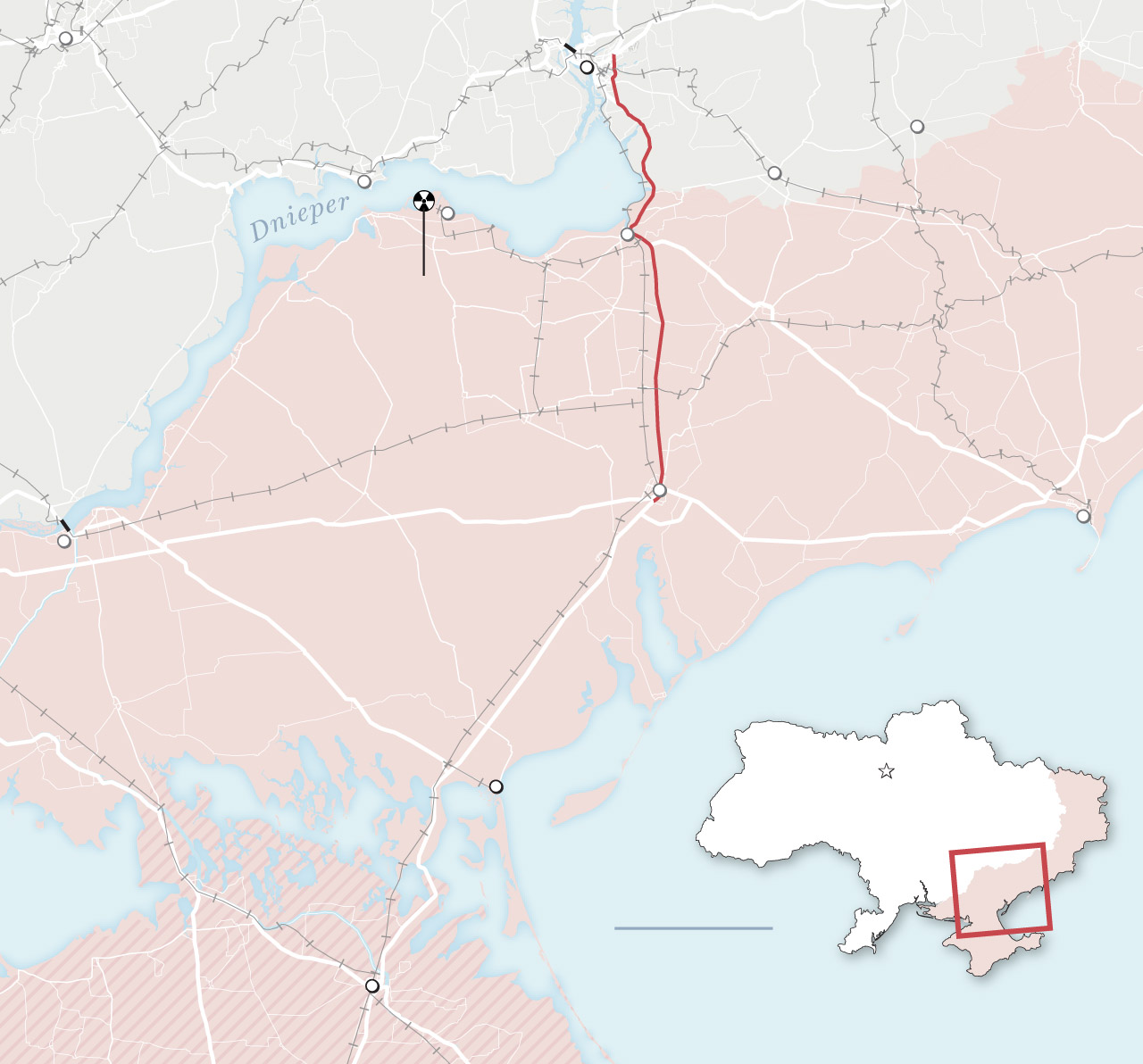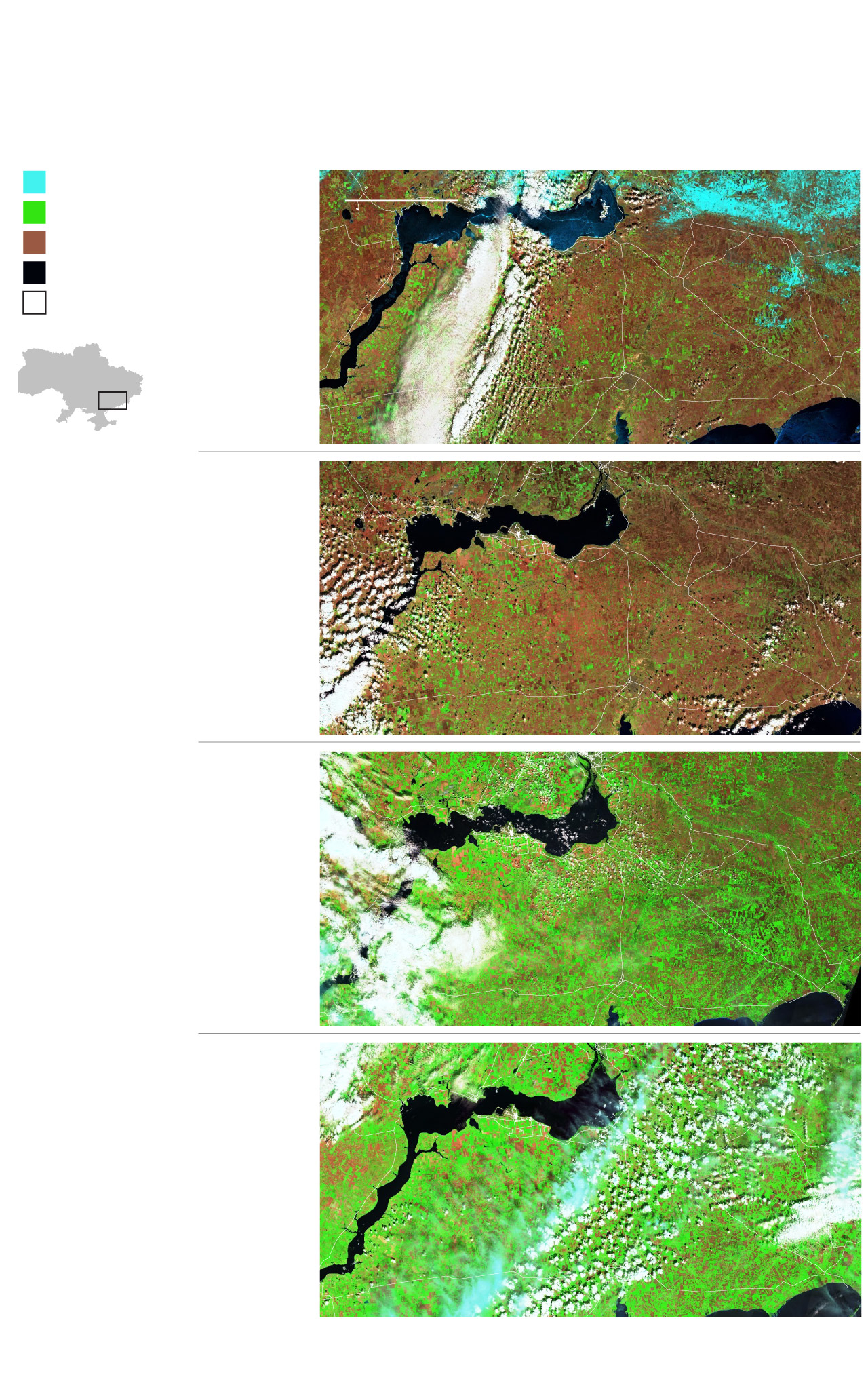Weather is no longer the sole determining factor in whether to launch an offensive, but the hardness of the ground can make a crucial difference in how much maneuverability armored forces have, especially when the Russians occupying Ukraine have dug elaborate defenses along paved roads.
Better weather means flexibility is not a problem. JL
Adam Taylor and Anastacia Galouchka report in the Washington Post:
With temperatures hitting a high of 78 degrees Fahrenheit last weekend, expectations of a long-awaited counteroffensive against occupying Russian forces are in full bloom. The winter months were unusually mild, leading mud to thaw earlier than usual. This led to Russian tanks and heavy vehicles stuck in fields or confined to paved roads, easy targets for the Ukrainian defenders. Warming weather provides advantages, including better tree cover for troops and vehicles and more hours of daylight. The ground was solid enough not only for tanks but for regular vehicles.“It’s vanilla,” he said, when stopped and queried a few moments later.
Spring has finally sprung in southern Ukraine. And with temperatures hitting a high of 78 degrees Fahrenheit last weekend, expectations of a long-awaited counteroffensive against occupying Russian forces are in full bloom.
An unusually rainy few months had left the ground muddy, sticky and unsuitable for heavy vehicles. But with the recent patch of dry weather, conditions are nearly optimal for the much-anticipated counterattack, which President Volodymyr Zelensky and others have described as a make-or-break chance to show Western backers that Ukraine is capable of taking back its land.
Although there have not yet been any dramatic troop movements like the lightning sweep by Ukrainian troops through the northeast Kharkiv region in the fall, the counteroffensive may already be underway — quietly.
On Thursday, an adviser to Zelensky, Mykhailo Podolyak, sought to reset any expectation that Kyiv would fire some kind of starting gun to announce the opening of the new initiative.
“Once again about the counteroffensive,” Podolyak tweeted. “1. This is not a ‘single event’ that will begin at a specific hour of a specific day with a solemn cutting of the red ribbon. 2. These are dozens of different actions to destroy the Russian occupation forces in different directions, which have already been taking place yesterday, are taking place today and will continue tomorrow. 3. Intensive destruction of enemy logistics is also a counteroffensive.”
Podolyak’s tweet was an effort to clarify things after the Italian broadcaster RAI quoted him in an interview as saying that the counteroffensive had already been underway for several days.
In the Zaporizhzhia region, which is expected to be a major focus of Ukrainian forces as they seek to recapture the city of Melitopol, the weather has been closely watched in recent weeks.
A push south through this largely agricultural area, now full of bright yellow fields with early summer’s rapeseed crop, could allow Ukraine to break the “land bridge” between mainland Russia and illegally annexed Crimea, cutting off vital logistical supply lines to the peninsula and position Ukrainian troops for further attacks.
Zaporizhzhia
Kryvyi Rih
UKRAINE
Huliaipole
Orikhiv
Nikopol
Enerhodar
Vasylivka
Nuclear power plant
at Enerhodar
Hydroelectric
dam
Melitopol
Berdyansk
Nova
Kakhovka
RUSSIAN-CONTROLLED
AREAS
Sea of
Azov
Northern
Crimean Canal
Kyiv
Henichesk
Detail
25 MILES
CRIMEA
Illegally annexed
by Russia
in 2014
Dzhankoi
Sources: May 24 control data via Institute for
the Study of War, AEI’s Critical Threats Project
Such a campaign would also push the front line back from places like Orikhiv, a once-thriving town of 19,000 that now sits about three miles away from Russian lines and for months has suffered nearly daily attacks from shelling and other aerial bombing, according to Deputy Mayor Svitlana Mandrych.
“We’ve been hearing about this counteroffensive for so long,” Mandrych, who is 52, said in an interview. “We just hope that it happens and that it is successful.”
Orikhiv is now mostly abandoned, and Mandrych leads humanitarian relief efforts for the 1,400 or so residents who have stayed. “We’re five kilometers from the front,” she said. “We’ve always been in the line of fire.”
Talk of a spring offensive has dragged on for months. Zelensky and other senior officials, including military commanders, have said that they were waiting for more weapons, ammunition and other supplies to arrive. Ukrainian troops have also been training to use new Western-provided fighting vehicles and other gear.
But even if sufficient material was in place, the weather presented a more elemental obstacle. “It depends on God’s mind-set and the weather conditions,” as well as the force strength that can be mustered, Defense Minister Oleksii Reznikov said when asked about the looming counterattack during an interview with The Washington Post early this month.
“This year there was an enormous level of water during the springtime — enormous,” Reznikov said, adding that groundwater levels on May 1 were 4.7 inches higher than would normally be expected.
In Zaporizhzhia, the problem here could be described more simply: mud.
Ukraine’s muddy season, known as “bezdorizhzhia” or “roadlessness” in Ukrainian, is an annual fact of life in Zaporizhzhia. The clay-heavy soil, which helps make Ukraine an agricultural powerhouse, simply does not drain well, resulting in a wet, gloopy mess that can bog down not only conventional vehicles with tires but also tracked vehicles like tanks or the 2S1 howitzer.
Evolution of the soil conditions in southern Ukraine
As spring turns to summer, once muddy and impassable ground in southern Ukraine is firming up, as seen in infrared imagery captured by the Copernicus Sentinel satellite.
Zaporizhzhia
Snow
30 Miles
Vegetation
Orikhiv
Soils and built-up areas
Enerhodar
Water
Clouds
Melitopol
Area of detail
Berdyansk
Feb. 10
Zaporizhzhia
Orikhiv
Enerhodar
Melitopol
Berdyansk
March 2
Zaporizhzhia
Orikhiv
Enerhodar
Melitopol
Berdyansk
April 26
Zaporizhzhia
Orikhiv
Enerhodar
Melitopol
Berdyansk
May 21
Source: Copernicus Sentinel
“It’s the same soil you get in northwest France,” said James Rands, a military expert with British intelligence firm Janes, pointing to the site of famously muddy, bloody battles during World War I. “But by all accounts, it’s worse.”
While the muddy season should last only a few weeks, the weather did not cooperate this year. April was an “extremely wet month” in Ukraine, said Inbal Becker-Reshef, a researcher at the University of Maryland who tracks global weather patterns, with unusually low temperatures at the start of the month.
The winter months over the end of 2021 and the start of 2022 were unusually mild, leading the mud to thaw earlier than usual. This led to an earlier muddy season, which saw numerous Russian tanks and other heavy vehicles stuck in fields or confined to paved roads, where they were easy targets for the Ukrainian defenders.
Now, warming weather provides other advantages, including better tree cover for troops and vehicles and more hours of daylight.
After a wet April, May has been remarkably dry, with temperatures often in the 70s. Becker-Reshef said that the lowest levels of soil moisture in Ukraine are now in Zaporizhzhia and Kherson, a neighboring region that could also serve as a front in the counterattack. Some areas are now even in a drought.
Ben Hodges, a former commander of U.S. Army Europe, said that ground conditions were certainly one factor that Ukraine would take into account in planning new offensive operations. “Is it dry enough to permit the churning and movements of hundreds of heavy, tracked armored vehicles and hundreds of support vehicles?” Hodges asked.
But he also stressed that it was just one of several factors, including the readiness of Ukrainian troops and whether their Russian adversaries had been degraded by airstrikes or distracted by prolonged fighting in certain areas like Bakhmut so as not to be able to anticipate Ukraine’s next moves.
“Have the Russian commanders been confused enough as to time, method and location of the attacks?” Hodges wrote in an email.
Other experts said ground conditions were no longer a cause for delay. “The weather used to be one of the factors,” Ukrainian military expert Oleksiy Melnyk said. “But not the main one.”
In a field in western Zaporizhzhia, about an hour’s drive from Orikhiv, the 1st Tank Battalion practiced offensive maneuvers on Wednesday with Soviet-developed T-64 tanks, plowing through the fields in formation and deploying smokescreens to practice clearing the agricultural lands now held by the Russians.
Temperatures had dipped slightly, with clouds on the horizon. T-64s have a habit of getting trapped in the mud, according to Yuri, a 29-year-old unit commander, but the ground was solid enough not only for tanks but for regular vehicles.
After the exercise, the troops gathered around at a nearby house to watch drone footage of their performance over bowls of solyanka, a thick soup. Mykhailo, 39, the deputy battalion commander, was not impressed.
“What if this is our field and the orcs are there?” he said, referring to Russian troops. “What are you going to do? Shoot our own?”
“For this kind of maneuver, you’ll get dragged into hell!” he said later.
In a town like Orikhiv, such training cannot conclude soon enough. Winter was hard and there is little chance to enjoy the warmer weather given near-daily bombardment. Many of the remaining residents spend 18 to 20 hours below ground.
Mandrych, the deputy mayor, now lives and works in the basement of a municipal building where she and other volunteers have set up a system to distribute food and to provide WiFi, electricity and even hot showers in a city where few homes have any of that.
Mandrych and other remaining residents have even taken the time to replant some of the flowers along the city’s central square. “We are keeping up our fighting spirit,” she said.





















1 comments:
Discover the excitement of iplwin casino, where cricket enthusiasts and gaming aficionados alike can enjoy a thrilling array of games and big wins.
Enhance your cricket experience with the iplwin app, your ultimate companion for fantasy cricket leagues and real-time match updates.
Dive into the world of cricket with iplwin, your premier destination for fantasy cricket leagues and immersive cricket experiences.
Post a Comment